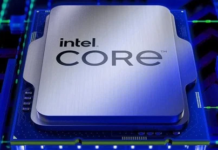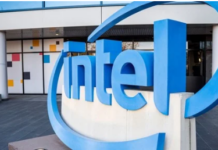Already announced on several upcoming smartphones, Qualcomm has only just lifted the veil on the new processors in the range, the famous Snapdragon 600 and 400 and their respective variations. A new cap level power and functionality is at the rendezvous, with also the generalization of the 4G LTE for all models.
On a practical level, there are two ranges of SoC, the Snapdragon 600 and the 400 (the 800 range remains reserved for high-end flagships). Here we are more in the presence of the medium and the entry-level, information that could be important for buyers of equipped devices. But let’s look in more detail at what to expect.
Snapdragon 600, performance revised upwards
Two Soc are thus concerned, the Snapdragon 620 and 618. For the 620, we are in the presence of an octo-core that incorporates 4 Cortex A-72 processors (clocked at 1.8 Ghz) and 4 Cortex A-53 (clocked at 1.2 Ghz) to find the best compromise between performance and autonomy. We find several features introduced by the 800 range.
The Snapdragon 618 has only 2 Cortex A-72 processors with 4 Cortex A-53s (clocked at the same frequencies as the 620), for significantly lower performance, to be verified in fact. In both cases, these two references will be ableto record in 4K and adopt an X8 LTE modem (category 7) that can reach 300 Mbps in download and 100 Mbps in upload, subject to having a compatible mobile operator.
The whole thing works of course in 64 Bits mode,just to get the most out of Android 5.0 Lollipop. If we are promised a high-flying Adreno GPU for an ever more pleasing image, we especially remember the innovations on the audio part, often a little forgotten on Android.
Qualcomm offers a 192 kHz/24-bit high-fidelity audio rendition to satisfy mobile music aficionados. We will check what is in fact, because this is a point a little neglected by the manufacturers, preferring to settle for a good average, nothing more. The first devices equipped with these two Snapdragon are expected in the second half of 2015.
The Snapdragon 400, the entry-level revisited
Good surprise for smartphones that will use the SoC Snapdragon 425, many features of the upper range will be part of the part for the so-called entry-level processors. Thus multimedia, audio, photographic, and X8 LTE modem features will be available. No jealousy and availability expected here again in the second half of 2015.
The differences are therefore in the choice of on-board processors. This will require an octo-core of 8 Cortex-A53 (1.7 Ghz in operation). Goodbye the Cortex A-72 of the 600 range. Qualcomm thus targets the “high-end” among the entry-level. And for this reason, the American manufacturer also needed a so-called call product, thanks to the Snapdragon 415.
This latest version moves away from the SoC already described in an attempt to convince the manufacturers of “low-cost”. The modem switches to X5 LTE (category 4, up to 150 Mbps download). Similarly, it is no longer a question of recording the video in 4K but of switching to Full HD format 1080p at most.
On the other hand, processor level, we find the configuration of the Snapdragon 425 with the 8 Cortex A-53 processors (clocked at 1.4 Ghz) and still the Adreno 405 in GPU. On the face of it, the whole will be efficient and consistent for basic use. Here again, the 64-bit mode is supported to make the best use of Android Lollipop. The latter SoC is expected to equip smartphones in the first half of 2015.
What about Qualcomm’s future?
As the war rages among the mobile SoCs with Samsung’s Exynos progressing by leaps and bounds, MediaTek moving fast, the Qualcomm leader had to react as quickly as possible or risk falling off his pedestal. A first major development has already been confirmed.
The manufacturer is officially working on an innovative new modem, the Gobi 9×45 that will evolve the mobile Internet even further with the X12 LTE, i.e. 450 Mbps in download and 100 Mbps in upload. Qualcomm’s future looks bright. briskly!
































